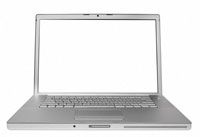What is White Space?

White space is always an active element in any good design; itâ??s also referred to negative space. White space is always occurring in a design from the moment you open up a blank document, the design has begun with white space. There are two types of white space, the undefined white space, which is what you get when you open a new document, and active white space, which occurs when an object is place in undefined white space.
Just to clarify a misconception, white space doesn't mean it has to be white because it can be any colour whether it is black, brown or white. Itâ??s also up to the designer to make it an important element of design because if not used properly it can be misunderstood for wasted space. Itâ??s really up to a designer to place type and shapes that would create interesting backgrounds as it would foreground.
What is the purpose of white space?
White space allows:
- 1. Rhythm
- 2. Unity
- 3. Legibility
- 4. Readability
- 5. Balance
Rhythm: This refers to the flow of elements in a design, whether it is type or shapes. White space allows the reader to easily engage the design without being confronted with too many graphics or type. It allows the reader to no be over powered by the design because thereâ??s enough balance between foreground and background. As human beings, we need space, itâ??s our nature and this is why we apply this understanding of the human nature in design because first and foremost, you want readers to be comfortable with the design unless its sole purpose is otherwise.
Unity: This principle of design is like the director behind the camera. He who directs and makes sure everything flows smoothly. Just like that UNITY is that principle that subtly steers the design, that is, if the designer is paying attention. Unity is responsible for all the elements in design being holistic and in agreement with each other. Even if the idea is to communicate contrast, unity is theyâ??re making the design work because all the elements work well with each other. If type is in contrast with each other, shapes, colours, and balance are all playing their roles to bring about unity in the design.
Legibility/Readability: This refers to how easily shapes of letters can be distinguished usually refers to larger sizes while readability refers to how easily type can be read.
Balance: Balance refers to the weight of a design based on the objects or elements of the design. By weight I simply mean the amount of elements in the design. Balance can either be symmetrical or asymmetrical. Symmetrical designs are those designs that once divided in half will have the same weight on both sides. Make no mistake that thereâ??s need for the each sides to have the same elements or objects, just as long the weight is even itâ??s symmetrical and it most cases, itâ??s identical on each sides. Asymmetrical is obviously the opposite of symmetrical whereby when divided itâ??s not balanced on each sides.
White space help creates either type of balance and make them work in an effective manner.
How is White Space Used?
Well for starters it can be used in every media of design whether it be web/graphic design, illustrations, abstract artwork or photography, it can be used anywhere.
In web design white space is crucial for legibility/readability. Some designers go overboard and think design is about adding but in fact, itâ??s about taking away but adding just enough. Some of the cleanest corporate sites have very limited content on the main page and content driven website make sure to place space between texts.
White space is used the same way in print layouts like magazine spreads the same way itâ??s used on web. In fact, great web design borrows the entire concept of web space from the printed medium.
In illustrations and abstract artwork itâ??s entirely up to the artist. I donâ??t believe thereâ??s any rule that should be followed in the use of white space. I canâ??t say someone uses it here or there because they use it where itâ??s creative.
Copyright © . All Rights Reserved